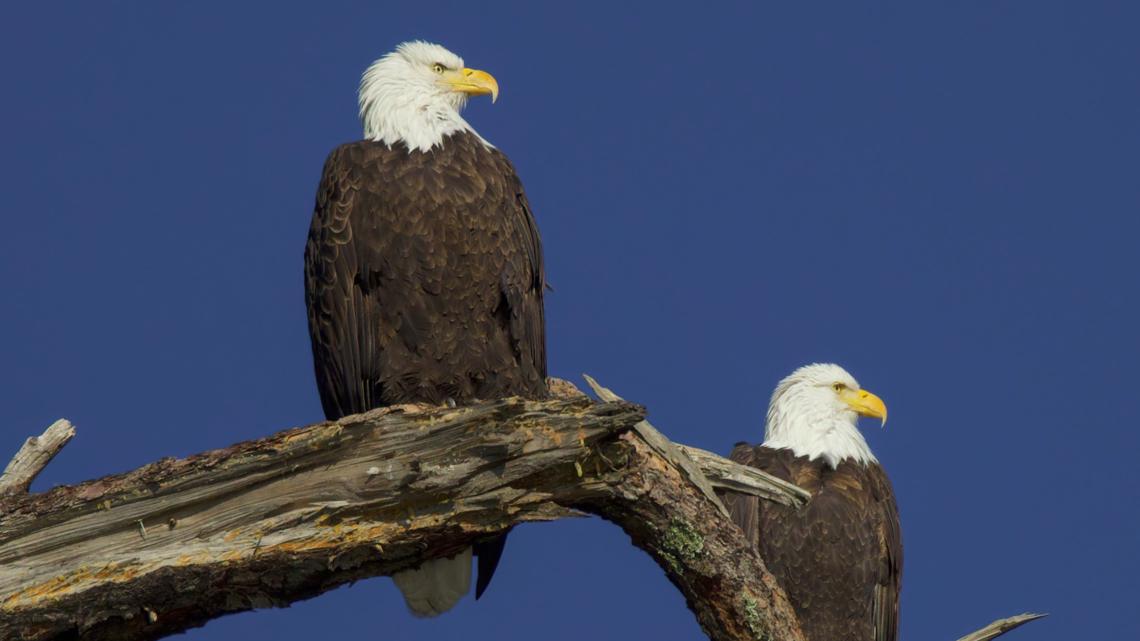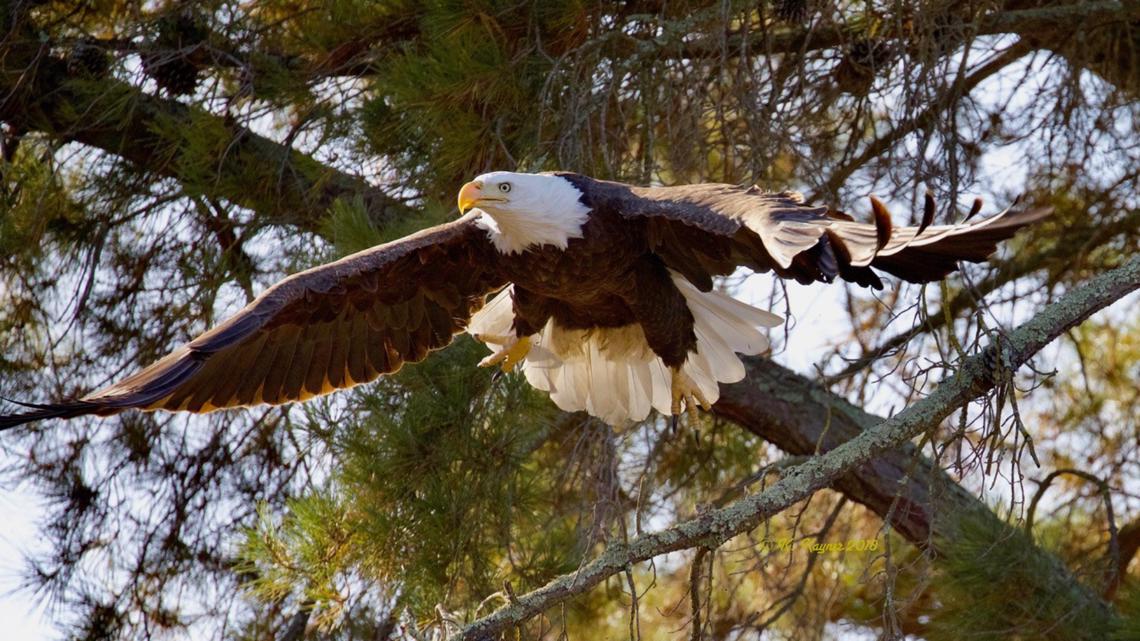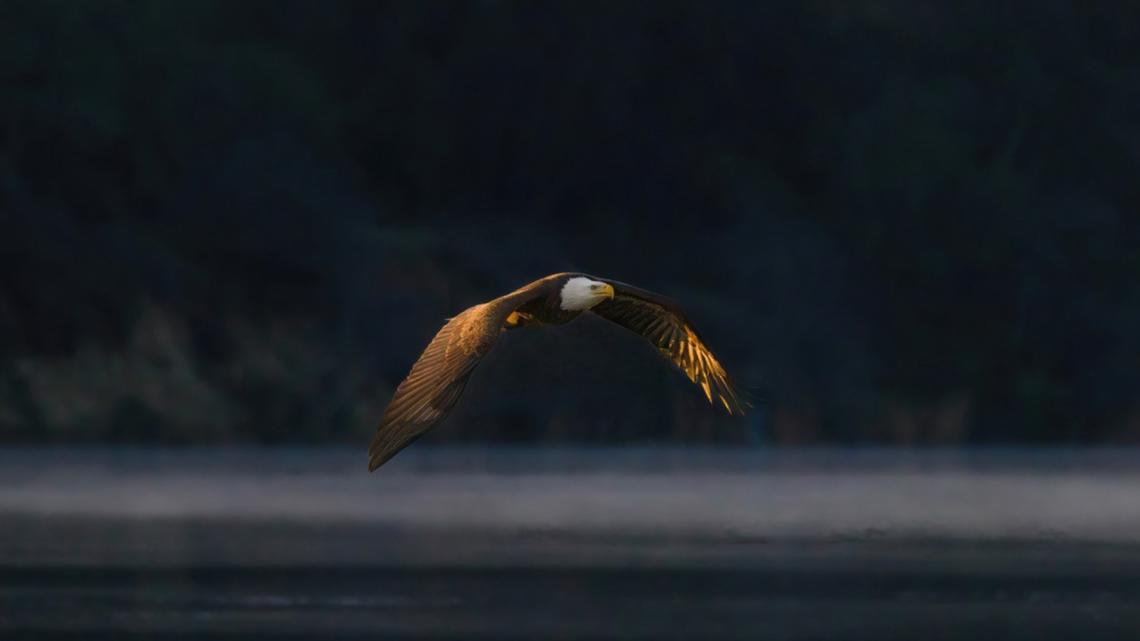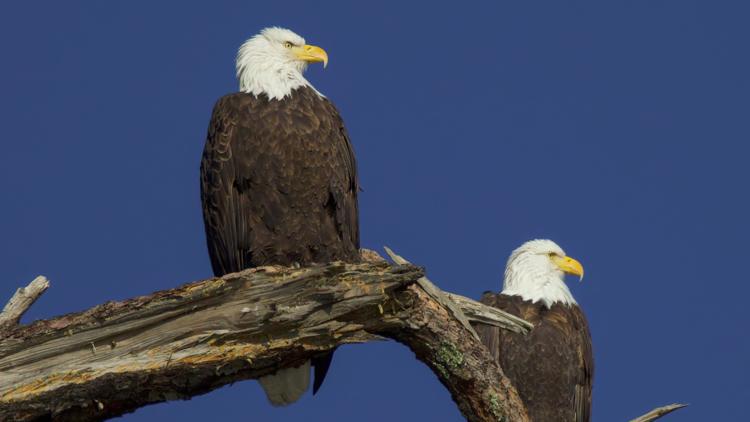FOLSOM, Calif. — Bald eagles, the national bird of the United States since 1782 when one was placed on the Great Seal, frequently nest in the areas surrounding Folsom Lake State Recreation Area.
Folsom is just one part of the American River watershed home to many nesting pairs of bald eagles, but only one successful nesting pair claims Lake Natoma as their home territory, according to Kathy Kayner, the lead bald eagle docent with Friends of Lakes Folsom and Natoma (FOLFAN), a nonprofit partner for the recreation area.
Kayner says Lake Natoma, Folsom Lake and the American River have an abundance of fish and nesting materials, both vital to the bald eagle lifestyle. The birds can also find a variety of mammals and reptiles for food in these locations.
The singular Lake Natoma pair can often be viewed October through July, just south of Black Miners Bar.


“Responsible viewing of the bald eagles means you need to view them from a safe distance of 400 feet or more so that you do not disturb them during nesting season,” she said.
She says she will identify the pair as “mother” and “father” when they arrive and begin to nest and lay eggs. Any eaglets they reproduce are then numbered to signify how many successful hatches and fledglings they have, according to Kayner.
“Giving wild animals names is controversial,” she said. “So, we avoid the controversy.”
Kayner says naming the animals may give people the impression the eaglets can become their pets.
“An eaglet may land on the ground in front of other individuals and they go, ‘Oh, there’s ‘Precious.’ Let’s go up and say hi to her,’” said Kayner. “Standing in front of an active nest with eggs or eaglets is a disturbance to them.”
FOLFAN president Jim Cassio says FOLFAN does not name animals because it suggests anthropomorphism, or giving human attributes to the animal, when they do not possess them.
He says he thinks most people have good intentions when giving animals names, but if an organization like a zoo does it, it is usually for fundraising purposes.
“I’ll share the dirty little secret,” said Cassio. “They may not be sharing the names publicly, but, sure, zookeepers have names for their animals.”


The Lake Natoma pair of eagles can most likely be seen from October to July, Kayner said
The timeline of the Lake Natoma couple's significant life events according to wildlife officials is as follows:
- The pair will work on their nests from October to January.
- They will lay eggs in early February or March. One parent will always be in the nest with the eggs. The eggs take about 35 days of incubation to hatch.
- Eaglets will take their first flight 10 to 12 weeks later, usually in June.
- Eaglets typically depart by July.
- The parents will leave the area in August.
“Because these eagles are not chipped or banded, we do not know for sure where they go when they leave the area,” said Kayner.
Wildlife officials say bald eagles have home territories ranging from two to 15 square miles, and they need a lot of territory to hunt and raise their young.


“Development has caused many species to move further away from their usual habitats,” said Kayner. “With coyotes, for example, the loss of habitat caused them to hunt and raise their young in cities and suburbs which causes conflict with many people.”
Kayner, a wildlife photographer for over 10 years, began studying and photographing the eagles after becoming a volunteer in 2017. Anyone can view a live feed of the eagles from a smartphone, tablet or computer on the FOLFAN YouTube channel.
Cassio says FOLFAN is testing a new microphone and camera, but people should be able to check the livestream around Christmas time.




















